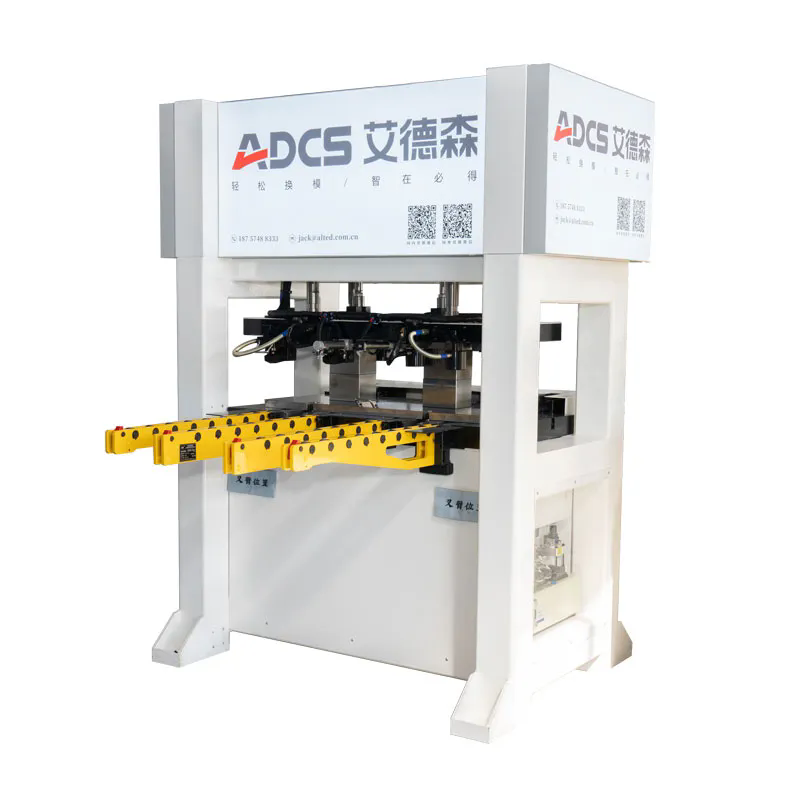How Does a Quick Die Change System Revolutionize Manufacturing?
2024-12-06
In the world of manufacturing, efficiency and flexibility are paramount. One innovation that has significantly transformed production processes is the Quick Die Change (QDC) system. But what exactly is a QDC system, and how does it streamline operations while boosting productivity? Let’s delve into the details of this game-changing technology.
1. What Is a Quick Die Change System?
A Quick Die Change system is a specialized setup designed to expedite the process of replacing dies in manufacturing equipment, such as stamping presses or injection molding machines. It minimizes downtime, enhances safety, and ensures a smoother transition between production runs, enabling manufacturers to respond quickly to shifting demands.
2. Why Is Die Change Speed So Important?
In traditional manufacturing, changing dies can be a time-consuming and labor-intensive task, often requiring hours of machine downtime. This not only affects production schedules but also increases labor costs. A QDC system reduces changeover time dramatically—often to just minutes—allowing manufacturers to:
- Increase production efficiency.
- Adapt quickly to smaller, customized orders.
- Reduce overall lead times.
3. Key Features of a QDC System
A Quick Die Change system is equipped with several components that work together to simplify and accelerate the die change process:
- Clamping Systems: Hydraulic or magnetic clamps secure dies firmly in place without manual adjustments.
- Die Lifters: These assist in moving heavy dies in and out of position effortlessly.
- Positioning Systems: Precision guides ensure dies are aligned correctly, minimizing errors and waste.
- Control Panels: User-friendly interfaces allow operators to manage the entire process efficiently.
4. Benefits of a Quick Die Change System
Implementing a QDC system offers numerous advantages that extend beyond faster changeovers:
- Enhanced Safety: Automated processes reduce the need for manual handling of heavy dies, lowering the risk of workplace injuries.
- Improved Flexibility: Manufacturers can switch between different products or designs with ease, meeting customer demands for variety and customization.
- Cost Savings: Faster setup times lead to higher machine utilization rates and lower labor costs.
- Reduced Scrap: Precise alignment and secure clamping minimize defects and material wastage.
5. Applications Across Industries
Quick Die Change systems are widely used in industries where precision and speed are critical, including:
- Automotive Manufacturing: For stamping car parts and adapting to model variations.
- Electronics: Producing components with tight tolerances.
- Packaging: Creating customized shapes and designs for packaging materials.
6. Eco-Friendly Manufacturing
By reducing setup times and material waste, QDC systems contribute to more sustainable manufacturing practices. Shorter production cycles also mean lower energy consumption, helping businesses meet environmental goals while maintaining profitability.
7. Is a QDC System Right for Your Business?
For businesses that rely on frequent die changes, a QDC system is an invaluable investment. It allows manufacturers to stay competitive in a fast-paced market by increasing agility and reducing operational costs. However, the decision to adopt a QDC system should consider factors like production volume, machine compatibility, and long-term goals.
Why Should You Embrace the Quick Die Change Revolution?
The Quick Die Change system is more than just a technological upgrade—it’s a strategic tool for improving efficiency, reducing costs, and staying ahead in an ever-changing manufacturing landscape. By adopting this innovative solution, businesses can achieve greater productivity, enhanced safety, and the flexibility needed to meet the demands of modern consumers.
In an industry where every second counts, the Quick Die Change system proves that speed and precision can go hand in hand, making it a must-have for manufacturers aiming to excel in today’s competitive environment.



